the classroom outdoors
my art practice has brought me here .........
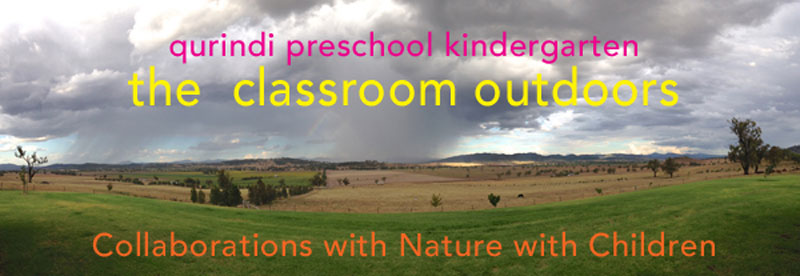
Quirindi Preschool Kindergarten and Collaborations with Nature have come together to create Collaborations with Nature with Children.
"For young children, the most seemingly insignificant things can be awesome. Finding
a cricket,an acorn or a colored leaf becomes a magical event.
All it takes is to step outside your door and explore..." .1
Who would have imagined ... I would be approached by a community based rural pre-school in North West NSW to facilitate workshops. Quirindi Preschool Kindergarten’s progressive director Alison Thompson says "the environment is the program". With this focus they have created an early- childhood learning program which uses the wonderful indoor and outdoor spaces(the school community has helped create) for children and staff to explore and utilize as a stimulant and catalyst for enjoyable learning.


When Alison became aware of my workshops COLLABORATIONS WITH NATURE, I was invited as part of their professional development program to work with her and her passionate team of educators to facilitate new and deeper creative interactions within their current pre-school environment and ultimately beyond. Alison understood the value and benefit to creative thinking and behaviour that Collaborations with Nature Workshops embodies. As the eminent educator Sir Ken Robinson states “Creativity is as important as literacy".

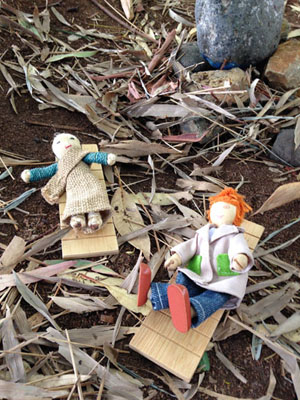




In addition Alison wanted to explore more meaningful documentation techniques for their activities, since documentation is a critical tool in communicating to parents and the broader community the meaning and types of learning experiences their children are enjoying. And these children really seem to enjoy their time there! All I heard and saw on an introduction day were various forms of concentration, contentment, enjoyment and excitement.
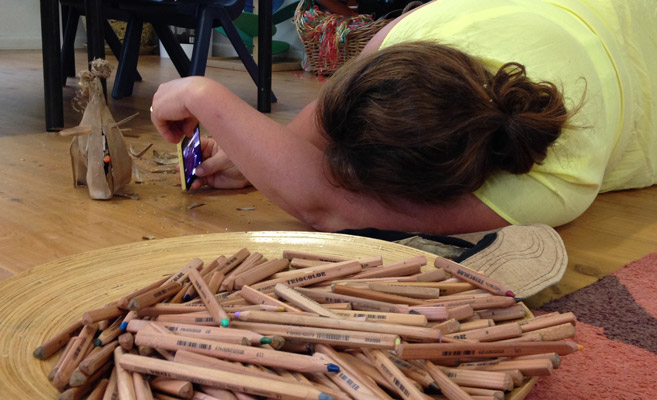


documentation - looking at things up close documentation - looking through the work books and children's journals documentation - looking at things from different angles
So we have begun with me giving a COLLABORATIONS WITH NATURE workshop within the preschool environment with educators, committee members and parents.

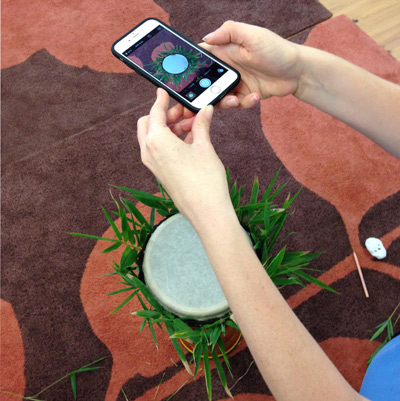





exercise 3/3 : bringing found natural materials indoors to combine with man-made materials
I was surprised to discover that even country dwellers are suffering a lack of direct nature engagement as screens/technologies take over their time. I also observed that even though the children and teachers came from farming properties in the main – their relationship to nature was as ‘financial commodity’, they spoke about tractors and crops and weather
(nature as part of machine) - not so much about rivers, creeks, rocks, trees, flowers, sky etc. This is not a judgement in any way – it seems that wherever we may be, we lack the means / time / headspace / heartspace to become intimate with the ‘wonderment commodity’ of nature. WHY?
One of the most poignant experiences and realisations of the day was that on reflection all participants said they preferred working outdoors directly in nature as opposed to bringing natural materials inside to play with. When asked why – no-one could really articulate what is was exactly – it just felt better being outside! So it may be a leap but one would suspect that children feel the same way.



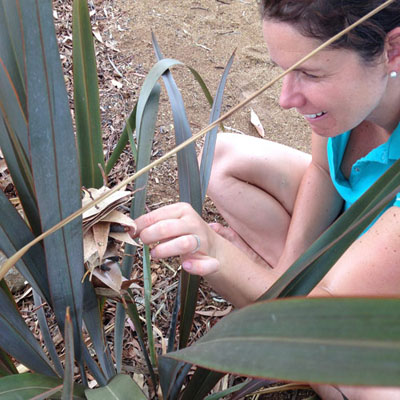


some of the participants final works for the day
Some feedback from participants was:
"Sharing your knowledge has helped to inspire me. Using materials available to us all the time... And the inspiration I felt on the day has continued.....
my four year old son and I have filled my phone with photos of nature and our own ephemeral art! Thanks Shona" Rebecca Tarrant – committee member and parent
"Blissful like a meditation day - so much learning" Jessica Harradine committee member and parent
"Today has inspired me to further engage with our children in creativity and imaginative play..." Jill Barber - educator
Collaborations with Children with Nature hopes to see even further engagement and learning through 'playing' outdoors with found natural materials and the documentation of this journey. The hope is, that with funding, the 3 'learning groups' of children will have excursions to whole natural environments participating in Collaborations with Nature based workshops in their local area where they will interact and create/play/learn.









some of the children engaing with more direct nature art/play/learning post workshop and interacting with artworks which teachers made on the day - looking totally sensitively engaged!
We are keeping the process open and organic, to change and morph according to needs and new ideas that may emerge from the children themselves as they create naturally. Further community engagement with this process may be in the form of a documentary photographic exhibition of the children’s artwork (incorporating in some way their inner worlds of experience via writings or audio recordings) in Quirindi town – possibly a part of the Quirindi Blackville art show this October 2015.
This experience has turned me onto the fascinating area of nature -based creativity and learning. Some further links to these ideas are:
Children Nature Org - http://blog.childrenandnature.org/
The Outdoor Classroom - http://outdoorclassroomproject.org/
The Common World Childhoods Research Collective - http://www.commonworlds.net/
"Nature deficit disorder refers to a hypothesis by Richard Louv in his 2005 book Last Child in the Woods that human beings, especially children, are spending less time outdoors resulting in a wide range of behavioural problems.”
The Nature Priciple by Richard Louv - the consequences for not just children but adults of Nature Deficeit Disorder.
http://www.education.com/topic/nature-deficit-disorder/
I have worked with natural found detritus for the last 25 years as a sculptor. My own creativity has been borne out of Nature.
My art practice has lead me to this understanding ... for healthy humans and environments we need to directly re-engage with the natural environment with our hands eyes, ears – all of our senses. Without interacting with Nature how do we have the capacity to know it, hold it dear, love it, care for it? Being in Nature brings us home to ourselves –in caring for Nature we care for ourselves. Our happiness/survival is in direct and immediate relationship to our natural environments' happiness/survival.
A VERY WONDER-FILLED JOURNEY HAS BEEN EMBARKED UPON..... thank you Alison and the whole pre-school community for putting your trust in me and thinking outside the square.
MORE TO FOLLOW.....
Bibliography
1. 16 tips for getting outdoors: Kathy Ambrosini February 10th 2015 blog.childrenandnature.org
The rest of your blog in this fields
